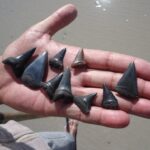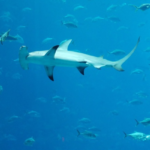The English Channel, or the Channel, or La Manche, is a part of the Atlantic Ocean. Covering 29,000 square miles, it is the smallest shallow sea encompassing Europe’s continental shelf.
The English Channel is a major passenger and freight route. On the other hand, the existence of sharks in this shallow sea is rarely mentioned. The salinity of this sea ranges between 3.4 and 3.6 percent, and over 20 shark species can be found in British waters.
Sharks, on the other hand, are scarcely spotted in the English Channel. However, only because we really can not see them frequently does not mean they don’t exist. As a result, we’ve dedicated this post to delving into the reality of English Channel sharks.
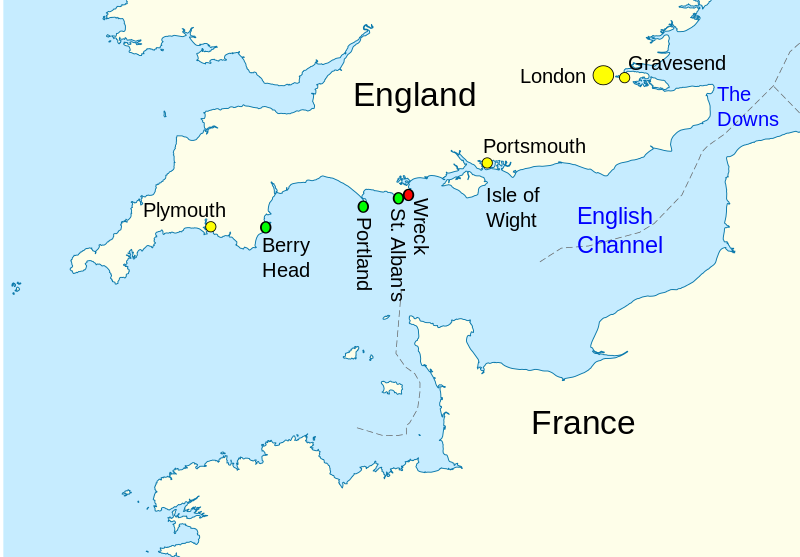
We’ll try to respond to some of the most common queries concerning sharks in the English Channel. So, let’s get started!
Are there sharks on the English Channel?
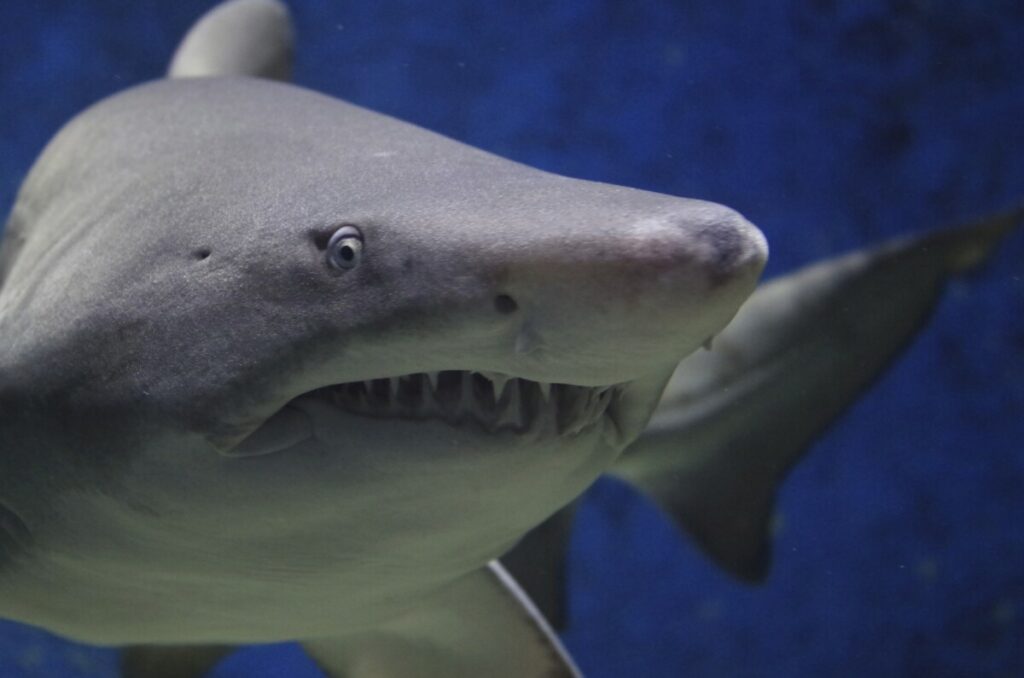
Although it is rarely discussed, whether the English Channel is home to sharks is worth discussing. Hence, let us shed some bright light on the subject.
Because the English Channel is an open sea with saline water, it is home to nearly 21 shark species. In addition, sharks such as basking sharks, blue sharks, and shortfin makos can be found in UK waters. As a result, there’s no reason to think they won’t migrate to the English Channel, especially given how deep the water is.
Although we cannot deny the presence of sharks in the English Channel, they are uncommon. In fact, no catastrophic shark attacks have been reported in the English Channel.
Are there shark attacks in the English Channel?
The rarity of shark attacks is one of the main reasons we forget that the English Channel has sharks. Nevertheless, it’s still worth looking into whether or not there have been any instances of shark attacks in the vicinity.
There have been instances of shark attacks in the English Channel. However, unprovoked shark attacks in this area are extremely rare, with the most recent in 1971. According to the Global Shark Attack File (GSAF), all unprovoked shark attacks have been more shark encounters.
Swimming enthusiasts are frequently advised to be cautious and avoid any fish they may come across on their journey.
Types of sharks in the English Channel?
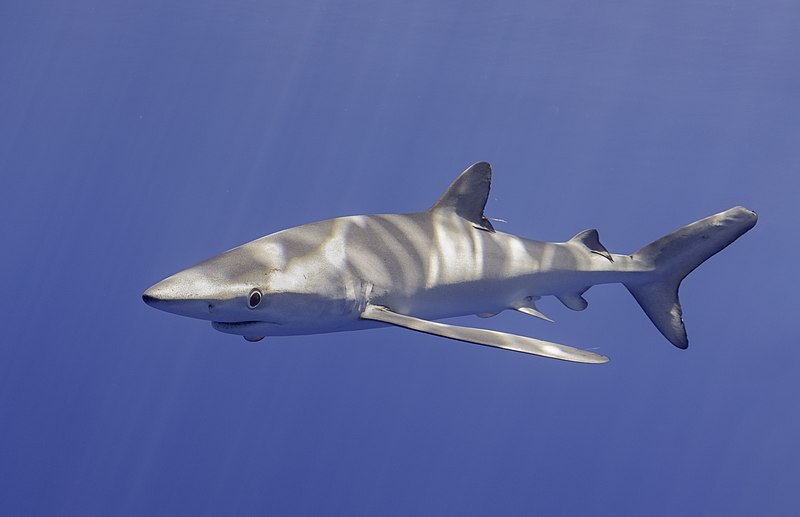
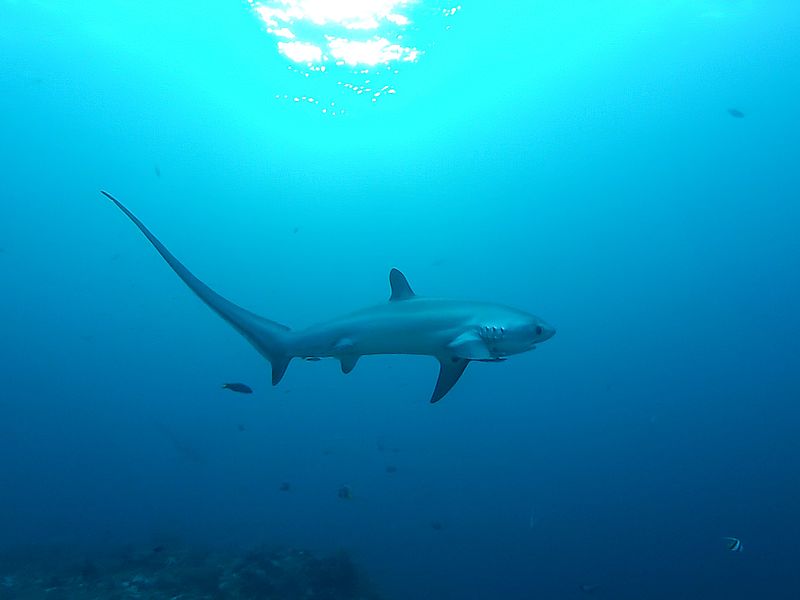
There have been no records of fatal attacks on humans by sharks in the Channel. Still, there are some notable shark species found in the English Channel. Let’s explore.
- Blue shark
Blue sharks, or Prionace glauca, migrate extensively. These sharks could be found off the coast of Cornwall, England. During the summer, blue sharks visit the British Isles. These sharks, which can grow up to 10 feet long, are less scary than most people believe. That said, blue sharks have made their way to the list of endangered species since 2016.
- Thresher shark
The common thresher shark is distinguished by its long tail. Because of their petite and sharp teeth, these sharks have made their mark on the list of aggressive predators. Blue sharks prefer to feed on mackerel, squid, young tuna, bluefish, and cuttlefish and rarely come into contact with humans. These sharks take a trip to British waters in the warmer months but are not a regular sight.
- Shortfin mako
A shortfin mako shark can grow to be 12 feet long and weigh up to 1200 lbs. Shortfin makos are well-known for their fast swimming (up to 45mph) and agility. Furthermore, these sharks can swoop as high as 20 feet out of the ocean surface during a hunting chase. Shortfin mako sharks are rare, however, they can be found in the waters along the coasts of the United Kingdom and Ireland.
- Oceanic whitetip shark
Oceanic whitetip sharks are dangerous to humans, despite being less frightening than great whites and tiger sharks. Victims of wrecks and plane crashes have been known to be attacked by these sharks. Oceanic whitetip sharks are commonly found in the English Channel. Despite this, whiteip sharks have been designated as vulnerable under the Endangered Species Act since 2018 owing to overfishing.
- Porbeagle
Porbeagle sharks and salmon sharks are more muscular and can be found in the cold and temperate seas of the North Atlantic. They can be seen in the English Channel swimming huge distances searching for prey, and procreating. These sharks are rarely fatal to humans, with only two unprovoked and non-fatal, as documented by the International Shark Attack File (ISAF).
Can we find great white sharks in the English Channel?
The UK waters are well-known for harboring various shark species, some of which are frightening. So, let’s see if there have ever been sightings of great white sharks in the English Channel.
The English Channel has had no confirmed sightings of great white sharks. In truth, there are no reports of this shark species in the waters around the British Isles. Still, experts are divided in this regard, with some suggesting they might have been only passing through now and then.
Readers may also compare this information to reports of great white shark sightings in UK waters. Nobody really, however, can prove that great white sharks exist in this area of the globe.
Are there dangerous sharks on the English Channel?
The mere sight of sharks conjures up images of DANGER in our minds. With their sharp teeth and open mouths, Sharks are like lurking peril.
The English Channel is home to some terrifying sharks. They are, however, dangerous due to their predatory behavior. Sharks such as porbeagles, great white shark cousins, and mako sharks are frightening, but there have never been reports of shark attacks in the English Channel. Furthermore, all shark attacks in UK waters have been non-fatal and unprovoked.
Apex predators, such as sharks, are apparently hazardous. In the English Channel, though, you are much less likely to see a shark. As a result, the definition of a dangerous shark must be revised from a human standpoint.
Are there any marine creatures on the English Channel?
The English Channel is home to a wide variety of marine life. Is there anything dangerous in this waterway, however?
There have been no reports of dangerous marine life in the English Channel. Nonetheless, a variety of sea creatures can be found here. The following are some of the creatures that can be found in the English Channel:
- Dolphins
- Whales
- Jellyfish
- Sunfish
- Orcas
- Bottlenose dolphins
- Seabirds (although not marine creatures)
Are there any orcas on the English Channel?
Dolphins are what orcas are. They are extremely intelligent and are regarded as apex predators. So, are there any killer whales or orcas in the English Channel?
According to news reports, female orcas were spotted in the English Channel for a short period in 2021. Also, according to the Sussex Dolphin Project, it is a proven fact that orcas have lived in the English Channel before, but they are extremely rare to see.
However, the recent sighting of (possible) orcas raises questions because the images are blurry. Yet, it has been established that the images depicted cetaceans with large dorsal fins.
FAQs
Q: What types of sharks are found in the English Channel?
A: Several species of sharks can be found in the English Channel, including the blue shark, basking shark, thresher shark, mako shark, Greenland shark, porbeagle shark, common thresher shark, and smooth hammerhead shark.
Q: Which shark is the fastest in the world?
A: The shortfin mako shark is considered the fastest shark in the world, capable of reaching speeds up to 45 miles per hour.
Q: Are there any whale sharks in the English Channel?
A: Whale sharks are not commonly found in the English Channel, as they are typically found in warmer tropical waters.
Q: Do sharks in the English Channel attack humans?
A: While shark attacks on humans are extremely rare in the English Channel, there have been a few documented cases of shark bites in the area.
Q: Are there any British shark species?
A: Yes, there are several shark species that can be found in the waters around the UK, including the porbeagle shark and the shortfin mako shark.
Q: Can sharks be found in UK waters?
A: Yes, there are many shark species that can be found in UK waters, including the blue shark, basking shark, and thresher shark.
Q: What is the largest shark species found in the English Channel?
A: The Greenland shark is the largest shark species found in the English Channel, capable of growing to lengths of up to 20 feet.
Q: Is there any organization dedicated to shark conservation in the UK?
A: Yes, the Shark Trust is a UK-based organization that is dedicated to the conservation of sharks and their habitats.
Q: Are great white sharks found in the English Channel?
A: Great white sharks are not commonly found in the English Channel. They are more commonly found in warmer waters around the world.
Q: How big can a shark in the English Channel reach?
A: The size of sharks in the English Channel varies depending on the species. Some sharks can reach lengths of up to 10-15 feet.
Summary
To conclude, the English Channel is home to over 20 different shark species. What is more intriguing is that we almost forget about this existence in modern times due to the absence of shark attacks. Humans are becoming a greater threat to sharks than sharks are to us. Still, if you visit the English Channel, you never know when you might come across a blue shark or a shortfin mako.

